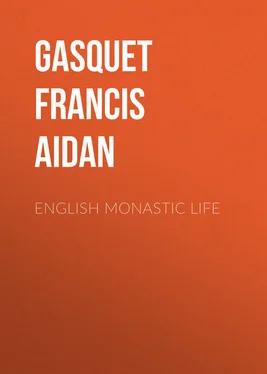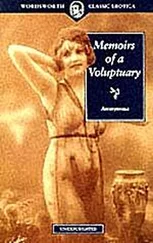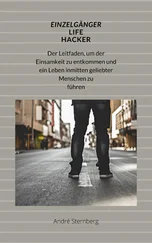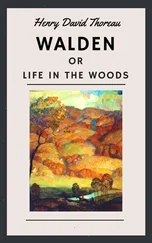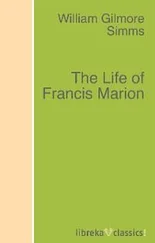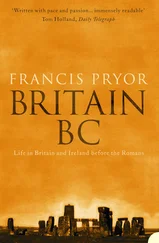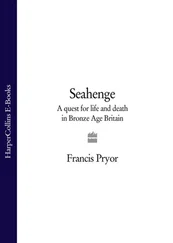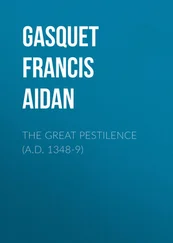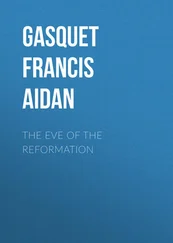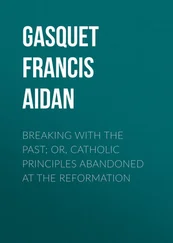Francis Gasquet - English Monastic Life
Здесь есть возможность читать онлайн «Francis Gasquet - English Monastic Life» — ознакомительный отрывок электронной книги совершенно бесплатно, а после прочтения отрывка купить полную версию. В некоторых случаях можно слушать аудио, скачать через торрент в формате fb2 и присутствует краткое содержание. Жанр: foreign_religion, foreign_antique, foreign_prose, на английском языке. Описание произведения, (предисловие) а так же отзывы посетителей доступны на портале библиотеки ЛибКат.
- Название:English Monastic Life
- Автор:
- Жанр:
- Год:неизвестен
- ISBN:нет данных
- Рейтинг книги:5 / 5. Голосов: 1
-
Избранное:Добавить в избранное
- Отзывы:
-
Ваша оценка:
- 100
- 1
- 2
- 3
- 4
- 5
English Monastic Life: краткое содержание, описание и аннотация
Предлагаем к чтению аннотацию, описание, краткое содержание или предисловие (зависит от того, что написал сам автор книги «English Monastic Life»). Если вы не нашли необходимую информацию о книге — напишите в комментариях, мы постараемся отыскать её.
English Monastic Life — читать онлайн ознакомительный отрывок
Ниже представлен текст книги, разбитый по страницам. Система сохранения места последней прочитанной страницы, позволяет с удобством читать онлайн бесплатно книгу «English Monastic Life», без необходимости каждый раз заново искать на чём Вы остановились. Поставьте закладку, и сможете в любой момент перейти на страницу, на которой закончили чтение.
Интервал:
Закладка:
In the greater monastic establishments there were frequently several places for the reception of guests. The abbot, or superior, had rooms to accommodate distinguished or honoured guests and benefactors of the establishment. The cellarer’s department, too, frequently had to entertain merchants and others who came upon business of the house: a third shelter was provided near the gate of the monastery for the poorer folk, and a fourth for the monks of other religious houses, who had their meals in the common refectory, and joined in many of the exercises of the community.
The Rites of Durham thus describes the guest-house which the author remembered in the great cathedral monastery of the North: —
“There was a famous house of hospitality, called the Guest Hall, within the Abbey garth of Durham, on the west side, towards the water, the Terrar of the house being master thereof, as one appointed to give entertainment to all states, both noble, gentle, and whatsoever degree that came thither as strangers, their entertainment not being inferior to any place in England, both for the goodness of their diet, the sweet and dainty furniture of their lodgings, and generally all things necessary for travellers. And, withal, this entertainment continuing, (the monks) not willing or commanding any man to depart, upon his honest and good behaviour. This hall is a goodly, brave place, much like unto the body of a church, with very fair pillars supporting it on either side, and in the midst of the hall a most large range for the fire. The chambers and lodgings belonging to it were sweetly kept and so richly furnished that they were not unpleasant to lie in, especially one chamber called the ‘king’s chamber,’ deserving that name, in that the king himself might very well have lain in it, for the princely linen thereof… The prior (whose hospitality was such as that there needed no guest-hall, but that they (the Convent) were desirous to abound in all liberal and free almsgiving) did keep a most honourable house and very noble entertainment, being attended upon both with gentlemen and yeomen, of the best in the country, as the honourable service of his house deserved no less. The benevolence thereof, with the relief and alms of the whole Convent, was always open and free, not only to the poor of the city of Durham, but to all the poor people of the country besides.”
In most monastic statutes, the time during which a visitor was to be allowed free hospitality was not unlimited, as, according to the recollection of the author of the Rites of Durham , appears to have been the case in that monastery. The usual period was apparently two days and nights, and in ordinary cases after dinner on the third day the guest was expected to take his departure. If for any reason a visitor desired to prolong his stay, permission had to be obtained from the superior by the guest-master. Unless prevented by sickness, after that time the guest had to rise for Matins, and otherwise follow the exercises of the community. With the Franciscans, a visitor who asked for hospitality from the convent beyond three days, had to beg pardon in the conventual chapter before he departed for his excessive demand upon the hospitality of the house.
9. THE PARLOUR OR LOCUTORIUM
In most Custumals of monastic observance mention is made of a Parlour , and in some of more than one such place. Here the monks could be sent for by the superiors to discuss necessary matters of business, when strict silence had to be observed in the cloister itself. Here, too – it may be in the same, or in another such room – visitors could converse with the religious they had come to see. Sometimes, apparently, among the Cistercians, the place where the monastic schools were held, other than the cloister, was called the auditorium or locutorium . At Durham, the room called the parlour stood between the chapter-house and the church door, and is described as “a place for merchants to utter their wares.” It apparently had a door which gave access to the monastic cemetery, as the religious were directed to pass through it for the funeral of any of the brethren. During the times of silence, when anything had to be settled without unnecessary delay, the officials could summon any of the religious to the parlour for the purpose; but they were warned not to make any long stay, and to take great care that no sound of their voices disturbed the quiet of the cloister.
10. THE ALMONRY
No religious house was complete without a place where the poor could come and beg alms in the name of Christ. The convent doles of food and clothing were administered by one of the senior monks, who, by his office of almoner, had to interview the crowds of poor who daily flocked to the gate in search of relief. His charity was to be wider than his means; and where he could not satisfy the actual needs of all, he was at least to manifest his Christian sympathy for their sufferings. The house or room, from which the monastic relief was given, frequently stood near the church, as showing the necessary connection between charity and religion. In most of the almonries, at any rate in those of the larger monasteries, there was a free school for poor boys. It was in these that most of the students who were presented for Ordination by the religious houses in such number during the fourteenth and fifteenth centuries, (as is shown by the episcopal registers of the English dioceses), were prepared to exercise their sacred ministry in the ranks of the parochial clergy.
11. THE COMMON-ROOM OR CALEFACTORY
The common-room, sometimes called the calefactory or warming-place, was a room to which the religious resorted, especially in winter, for the purpose of warming themselves at the common fire, which was lighted on the feast of All Saints, November 1st, and kept burning daily until Easter. On certain occasions, such as Christmas night, when the Offices in the church were specially long, the caretaker was warned to be particularly careful to have a bright fire burning for the community to go to when they came out of the choir. The common-room was also used at times for the purpose of recreation.
“On the right hand, as you go out of the cloisters into the infirmary,” says the Rites of Durham , “was the Common House and a master thereof. This house was intended to this end, to have a fire kept in it all the winter, for the monks to come and warm them at, being allowed no fire but that only, except the masters and officers of the house, who had their several fires. There was belonging to the Common House a garden and a bowling alley, on the back-side of the said house, towards the water, for the novices sometimes to recreate themselves, when they had leave of their master; he standing by to see their good order.
“Also, within this house did the master thereof keep his O Sapientia once a year – namely, between Martinmas and Christmas – a solemn banquet that the prior and convent did use at that time of the year only, when their banquet was of figs and raisins, ale and cakes; and thereof no superfluity or excess, but a scholastical and moderate congratulation amongst themselves.”
12. THE LIBRARY
“A monastery without a library is like a castle without an armoury” was an old monastic saying. At first, and in most places in England probably to the end, there was no special hall, room, or place which was set aside for the reception of the books belonging to the monastery. In the church and in the cloister there were generally cupboards to hold the manuscripts in constant use. It was not till the later middle ages that the practice of gathering together the books of an establishment into one place or room became at all common. At Durham, about 1446, Prior Wessington made a library , “well replenished with old written doctors and other Histories and Ecclesiastical writers,” to which henceforth the monks could always repair to study in, “besides their carrels” in the cloister. So, too, at St. Alban’s, Michael de Mentmore, who was abbot from 1335 to 1349, besides enriching the presses in the cloister with books, made a collection of special volumes in what he called his study. This collection grew; but it was not till 1452 that Abbot Whethamstede finally completed the library , which had long been projected. About the same time, at Canterbury, Prior Thomas Goldstone finished a library there, which was enriched by the celebrated Prior William Sellyng with many precious classical manuscripts brought back from Italy. In the same way many other religious houses in the fifteenth century erected, or set apart, special places for their collections of books, whilst still retaining the great cloister presses for those volumes which were in daily and constant use.
Читать дальшеИнтервал:
Закладка:
Похожие книги на «English Monastic Life»
Представляем Вашему вниманию похожие книги на «English Monastic Life» списком для выбора. Мы отобрали схожую по названию и смыслу литературу в надежде предоставить читателям больше вариантов отыскать новые, интересные, ещё непрочитанные произведения.
Обсуждение, отзывы о книге «English Monastic Life» и просто собственные мнения читателей. Оставьте ваши комментарии, напишите, что Вы думаете о произведении, его смысле или главных героях. Укажите что конкретно понравилось, а что нет, и почему Вы так считаете.
